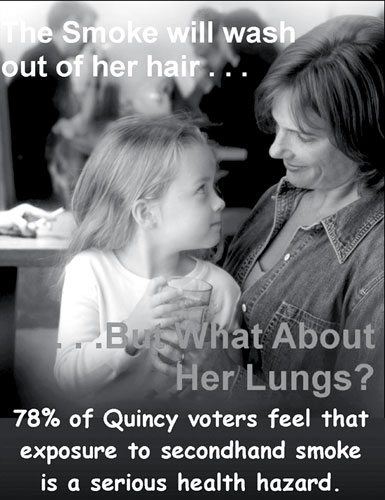Children : the victims of the silent killer ?
The adverse impact of Second Hand Tobacco Smoke (SHS):
by Indeewara Thilakarathne
[email protected]
Speaking on the current rate of tobacco prevalence in Sri Lanka
Director National Curative Diseases Dr. Lakshmi Somatunga stated that
tobacco prevalence among men is 25 per cent and it is less than 1 per
cent among women. Thus children are at a risk of being exposed to Second
Hand Smoke (SHS).
 Though there are no short cuts to stop passive smoking, the answer to
these issues lie in the creation of a total tobacco free environment in
indoor work places and public places. Though there are no short cuts to stop passive smoking, the answer to
these issues lie in the creation of a total tobacco free environment in
indoor work places and public places.
Over the last 50 years, scientific studies have proved the adverse
impact of Second Hand Tobacco Smoke (SHS) on children and the impact of
tobacco smoke by mothers on the fetus.
According to the WHO report on Protection from Exposure to Second
Hand Tobacco Smoke, scientific evidence gathered by medical bodies
worldwide such as WHO, IARC, the United States Surgeon General, the
United States Environmental Protection Agency (EPA), Cal/EPA, have
proved the adverse effect s of SHS on the respiratory and circulatory
systems.
There are bodies of scientific evidence that SHS has adverse effects
on blood lipids, clotting systems (platelets) and arterial wall function
within minutes. Significantly many of those outcomes are almost similar
to those seen in active smokers.
Current scientific evidence shows that SHS causes heart diseases and
significantly increases the risk of death due to coronary diseases by
about 30 per cent. It is also linked to lung cancer.
Studies by scientific bodies including the IARC, the United States
Surgeon General and the United States EPA, arrived at the conclusion
that SHS causes lung cancer in nonsmokers.
Naturally the impact of SHS on children is far reaching as they are
exposed to tobacco smoke by parents.
The exposure resulted in causing lower respiratory tract illnesses
such as bronchitis and pneumonia, particularly during the first year of
life.
Some of the common symptoms in children of smokers, which recur in
greater frequency are cough, phlegm and wheeze. In addition exposure to
SHS worsens the asthma in children and causes new-onset asthma.
The cost of SHS exposure
Exposure to SHS has wider economic repercussions than it is thought
of. Besides significantly reducing efficiency in productivity both at
individual and community levels, it has long term indirect medical
costs. It also incurs additional expenses on renovation and cleaning
costs and also increases risks of fire.
Though there are no available statistics on cost of SHS exposure in
Sri Lanka, studies have been conducted and evaluated the cost of SHS in
Australia, Canada, Hong Kong Special Administrative Region (Hong Kong
SAR), Ireland, the United Kingdom and the United States.
 Though the cost varies on many factors, it has been established that
SHS exposure causes significant losses to economy in terms of reduction
of productivity and increasing health care budget. Though the cost varies on many factors, it has been established that
SHS exposure causes significant losses to economy in terms of reduction
of productivity and increasing health care budget.
In United States, a recent study conducted by the Society of
Actuaries estimates that SHS exposure responsible for over US$ 5 billion
in direct medical costs and in over US$ 5 billion in indirect medical
costs (such as disability, lost wages and related benefits).
In Hong Kong SAR, the annual value of direct medical costs, long-term
care and productivity loss due to SHS exposure is estimated to be US$
156 million.
The most effective protection strategy is the creation of smoke free
environment in public and work places. Though the separation of smokers
and non-smokers within the same space will not reduce level of
non-smokers' exposure to SHS, it is by and largely dependent on other
factors such as the amount of smoking and ventilation apparatus in use.
Benefits of smoke-free environments
One of the direct health benefits of the smoke free environment is
the drastic reduction of toxic level in the environment which was
earlier exposed to SHS.
This has been observed in public places such as in restaurants and
bars where non-smoking hospitality workers health has been significantly
improved following the implementation of the law banning smoking in
public places.
For instance, reported respiratory symptoms among Irish bar workers
decreased by 16.7 per cent after the law came into effect. In addition
to improving health, smoke free environment has yielded significant
economic benefits in terms of lowering direct medical costs to care for
conditions attributable to SHS exposure and also reducing insurance
costs (the higher insurance cost for smokers includes health, fire,
accident and life insurance).
The other benefits includes increased productivity among those who
quit smoking and among workers no longer exposed to second-hand smoke
(time saved on smoking breaks and absenteeism due to illness), lower
building maintenance costs.
Sometimes economic benefits can be substantial. For instance, it is
estimated that that smoke-free environments would save employers the
equivalent of 0.515per cent to 0.77per cent of the GDP in Scotland and
between 1.1per cent and 1.7per cent of GDP in Ireland.
The United States Occupational Safety and Health Administration (OSHA),
has estimated that clean air increases productivity by 3per cent.
Legislation to curb the menace
Though legislations on banning smoking in public places and places of
work are often perceived as causing negative effects on business and
hospitality industry, it has proved that they have a positive effect,
significantly contributing to the reduction of risks associated with SHS.
Effectively implementing the mandatory legislations in banning
smoking in public places, places of work, though opposed at the
implementation stage, have yielded positive results, creating total
smoke free environment not only in places of work but also in public
transport.
In order to minimize the obvious opposition from the tobacco
industry, it is imperative that policy decisions are made to educate the
public on the negative effect of smoking on individuals health in
general and SHS on non-smokers and children in particular.
Community involvement and implementation and enforcement plan is
necessary to ensure smooth implementation of legislations on banning and
curbing smoking in addition to setting up monitoring mechanism to
oversee the progress. |
